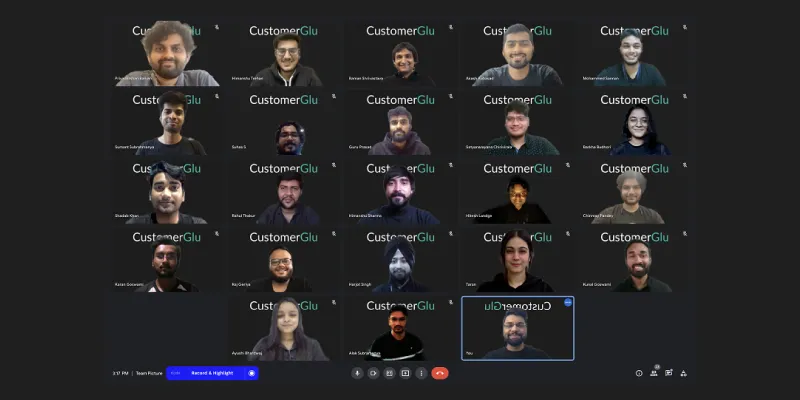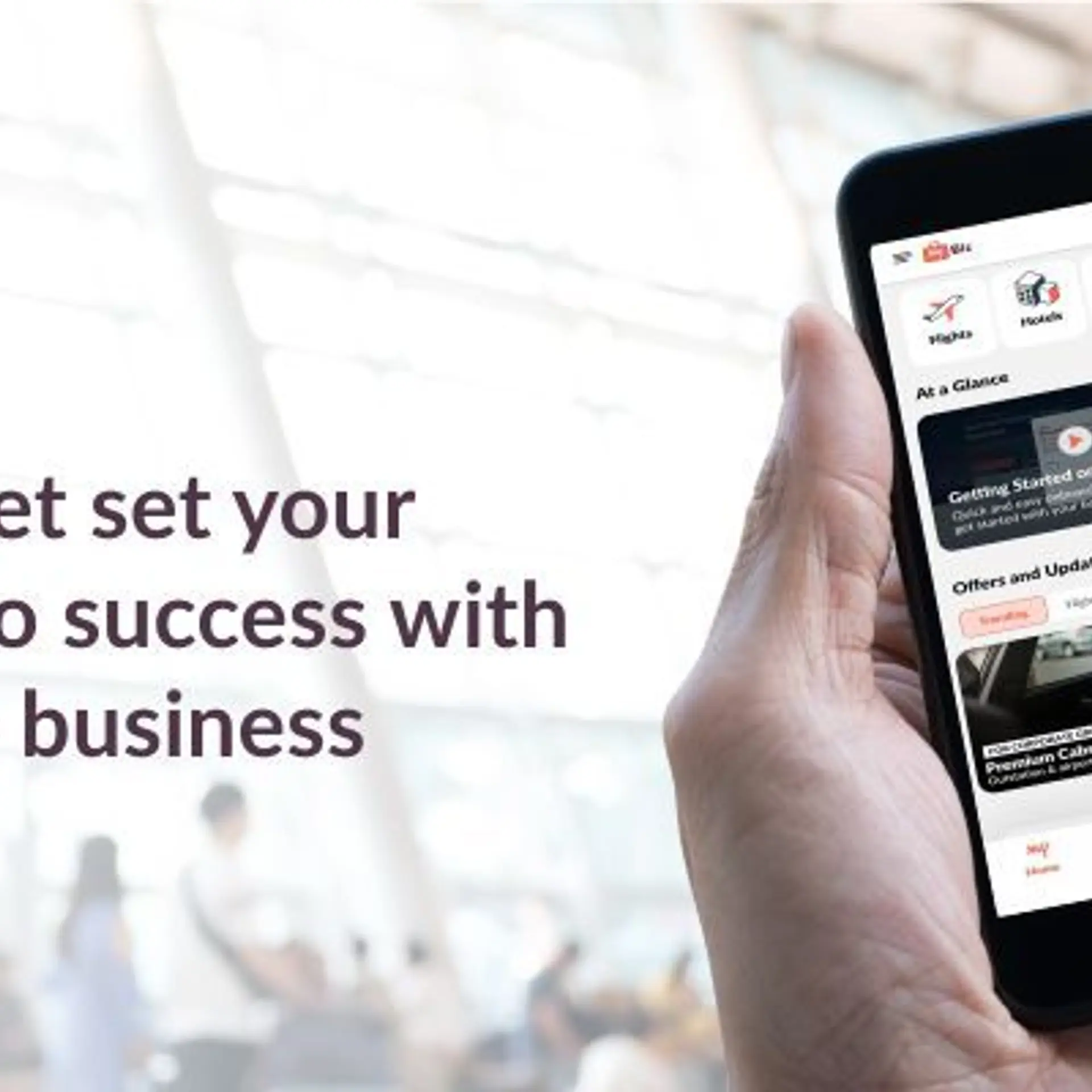[Tech50] How enterprise tech startup CustomerGlu is unlocking the great potential of customer engagement and retention
One of YourStory’s Tech50 2021 startups, Prateek Gupta of CustomerGlu shares strategic insights into inducing user stickiness to content or brand at a time when push notifications are on their way out
Bengaluru-based enterprise tech startup is rewriting the rules of customer experience.
But how did they embark on this journey?
Prateek Gupta, who was into game development during his college days at the Vellore Institute of Technology (VIT) University, Vellore, met his senior at VIT, Raman Shrivastava through a common professor.
Raman had been to the US building a mood-based food recommendation app. The story goes that though Raman spent a lot of money to acquire users on the app, however, he wasn’t able to retain them, and the product couldn’t take off. He was back in India working on consultancy projects when he got acquainted with Prateek.
On another front, Sumant Subrahamanya, a mechanical engineer from SRM University, built a stock prediction app while in college. It turned out that Sumant too faced a similar problem. When he launched, he managed to register a certain number of downloads and users but wasn’t able to ensure that those users stuck to the product.
Prateek, Raman and Sumant, the trio came together in the middle of 2017 and in 2020, launched CustomerGlu, which is also one of YourStory’s Tech50 2021 most promising pre-seed startups.
“We stumbled upon this problem of predicting user behaviour to solve customer churn or to improve customer retention. In the case of an Uber user, for example, we can predict with a specific probability if the user is going to book a ride. That was the first thing that we were solving in the market,” shares Prateek.
When Prateek, Raman and Sumant launched CustomerGlu, aiming to work around user behaviour predictions, they realised pretty soon that the key challenge was in scalability. “Every single company that we worked with had their own data sets, making the system very non-scalable. We also realised that predictions alone were not good enough. We could tell a company which customers to target depending on the probability of those customers going for the transaction being more than 80 percent but the same couldn’t help us break down what the company should do to retain these same customers,” explains Prateek.
Prateek draws an analogy with the game of Mario. “Think about the way a gamer plays Mario. The gamer has to move the character and opt for stunts to maximise the score. We thought of applying these concepts to marketing, where every move that a marketer makes has to guide the user in order to ensure they reach the maximum or a high conversion rate,” shares Prateek.

Death of push notifications?
That today smartphone users receive tons of push notifications from mobile-first apps is widely known. But, do users really engage with the notifications?
“Maybe notifications help with the brand recall or remind a customer that a particular app is still there on her mobile but it doesn’t necessarily lead to high conversions,” says Prateek.
Studies show 71 percent of users actually don’t want to receive notifications, in fact, they turn them off, some even uninstall apps because of this intrusion. “The fact that a user installs an app indicates there is a user case in the first place. As soon as a user visits an app, the key is to drive the user to comprehend the value of the product and use the right features. The key is to create action trigger loops within your product such that a user completes a desired action like booking a ride, making a purchase, discovering a catalogue on an ecommerce store,” explains Prateek.

From being debt-ridden to charting the US growth plan
Interestingly, CustomerGlu went live because of their very first customer Purplle, an online beauty and cosmetics ecommerce store. Prateek shares the story. “In October 2020, we were out of capital. All three of us, the founders, did not take our salaries for three-four months. We were under a debt, but we kept going on. We signed our first contract with Purplle, which helped us sail through the October-November-December quarter last year, eventually helping us get a foothold through the pandemic,” shares Prateek. In January this year, CustomerGlu closed BookMyShow as another customer.
“The bottomline is we are moving beyond the spectrum of gamification towards the space of broader customer experience and customer retention. We have also started setting up base in the US and have landed early proofs of concept (POCs) there. We have early signals of interest from companies like Seated, Even Better Snacks among others. For us, the next year is going to be about growth and expansion in the US. We want to replicate our Indian success story in the US and one of the founders will shift base there to manage the front,” shares Prateek.
The non-conservative customer acquisition game
At CustomerGlu, the customer acquisition strategy has been sector-agnostic with clients being acquired across domains from gaming, to fintech, entertainment and content. When Purplle registered a strong value for their product and 4x uplift in terms of their revenue through their programmes, CustomerGlu went ahead to work with an adjacent brand, the online fashion player Zalora, reportedly the largest fashion brand in South East Asia. Then, CustomerGlu started working with Nykaa, and now they are in active conversation with Pharmeasy, Paytm among several others.
Competitors and the revenue map
In terms of market competition, Prateek shares that a platform like Flyy is essentially not a direct competitor. The game-driven Flyy website urges users to play a "game" inside their app but that is not a direction that CustomerGlu is headed in because “games will increase app opens, but don't deliver meaningful engagement," as Prateek puts it. He shares that the company is entering into a horizontal customer engagement in nudges which would mean features such as in-app stories, to real-time data aggregation based triggers and low-code builder would enable users to build new templates/programs on their own.
Prateek says AirKit, a US-based company, comes closest to CustomerGlu in terms of their product build but at the same time, AirKit is largely into the contact-center automation use cases. “You can think about us like an AirKit for customer experience within the product rather than customer services” emphasises Prateek.
“As a business, we are crossing around $200k annual run rate (ARR) and this is right on the heels of signing up all the annual contracts. In terms of revenue growth, we were driving around $3,000 at the start of this year in January, and today we are generating $20,000 in terms of the monthly run rate. So, that’s where the $200k ARR benchmark comes from. In terms of live customers, today we have 15 live customers and we have another 50 in the pipeline,” he adds.
The future with customer retention coaches
In the customer engagement and retention industry, Prateek explains that no tool is good or bad, the biggest problem is one doesn’t know how to apply these tools to a particular use case.
“For example, a retention person from a fintech industry will think differently from a retention person in the ecommerce industry. So, this kind of domain knowledge or domain insight is very important for every industry,” explains Prateek.
In fact, CustomerGlu’s content strategy enables customisation. “We want to host a community of customer retention coaches that would essentially power customisable templates on our platform. Our platform will be akin to a creators platform or marketplace where our retention coaches can create these templates and sell them to others in the market. We will ensure our customers are able to get these experts or retention coaches,” shares Prateek about envisioning a future where domain knowledge experts will be critical.
Edited by Anju Narayanan


![[Tech50] How enterprise tech startup CustomerGlu is unlocking the great potential of customer engagement and retention](https://images.yourstory.com/cs/2/0e302530227f11ec9e19b7c38d296967/Founders-CustomerGlu-1640172881314.png?mode=crop&crop=faces&ar=2%3A1&format=auto&w=1920&q=75)
![[Tech50] How after losing her young sister, this entrepreneur started a braintech startup](https://images.yourstory.com/cs/2/77e43870d62911eaa8e9879653a67226/Neuphony-1640094846086.jpg?fm=png&auto=format&h=100&w=100&crop=entropy&fit=crop)




